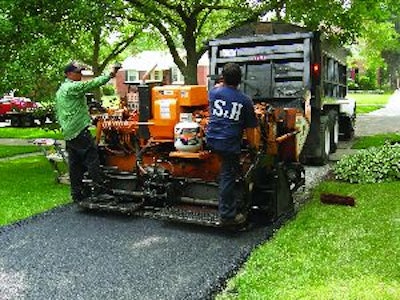
Certainly the most exacting – “finicky” is another way to put it – person on the paving crew is the screed operator. And that’s a good thing because among his responsibilities is making sure the crew lays the correct amount of hot mix asphalt.
Sound easy? No way.
Planning out the job, walking and marking the plan with the foreman or paver operator (or both), measuring out the passes, determining the yield of a truckload of material, keeping on top of the trucking schedule, communicating with the paver operator to keep the pace of the job steady, and monitoring the mat, edges, joints, and other aspects of job quality – all this and more fall under the screed operator’s responsibilities.
Not an easy job, by any means, but a rewarding one that gives the screed operator (often called the screw man or back end operator) an opportunity to direct a quality job while earning one of the highest salaries on a paving crew.
But the abilities needed to be a successful screed operator aren’t skills that are come by easily or over the short term. In fact, it takes at least two years to gain the knowledge and experience needed to operate the back end of a paver. By the time a crew member is ready to become the lead screed operator he or she has probably worked with the lute, shovel, and rake. He’s certainly become adept at running the broom, knows his way around a roller, and can even hop on a skid steer to keep things moving on the job when needed. Then, once he’s become adept at virtually all other aspects of the laydown operation, he is ready, maybe, to learn how to run the screed. And if that is the next step he takes he’ll be assigned to one side of the screed where the lead screed operator can talk to him, guide him, teach him, and monitor him as he learns the ins and outs of the extensions, how to monitor and control yield, how to communicate with the paver operator, and how to keep the crew engaged on the job – basically the intricacies of the pace of the paving operation.
That’s why the screed operator is the “go guy,” and nothing happens on the job without his say-so. The trucks don’t dump, the paver doesn’t move, there’s no handwork or rolling, and everyone is standing around waiting until the screed operator gives the word.
1. Plan the job
The screed operator starts each day talking with the foreman. He learns about the job, the paving depth, the tonnage, how many trucks are in the plan, how much does each hold, how far is the plant, any deadlines (to be off the property or road, for example), and any other peculiarities.
Then he conveys that information to the paver operator as they walk the jobsite. He’s looking for potential problems, determining how he’s going to approach it, and where he’s going to start and finish. He’s looking for grade changes that might affect yield, he’s thinking about the tonnage for the job and where’s it going to go. He’s considering the drainage: Does the water go left, right, or down the middle? Does the drainage change on the site? He’s thinking about the aesthetics of the job, thinking about what he can do to make it look good.
A screed operator will often have a measuring wheel so he can walk off how far a truck load of material will go. In addition to the measuring wheel (which often is operated by the screed operator in training), the screed operator needs a 30-foot tape measure so he can measure out and mark the width of his paving passes as he walks the job.
Here’s why: A truck delivering 20 tons of mix that will be placed 2 inches thick and 10 feet wide should end “here,” and he sprays a mark with the can of paint he’s carrying. And with the measuring wheel he can walk through the job, rolling and measuring and marking so that when he’s on the screed and the paving operation is in full force he knows where each pass is supposed to end.
2. Control the yield
This isn’t done just to keep track of the job; it’s done to keep track of the yield. Perhaps the screed operator’s primary responsibility is making sure the amount of mix the crew is placing doesn’t cost the company more money than it expected it to cost, while at the same time making sure to provide the client what she wants and has paid for.
If he finishes a truck load and he’s 2 feet short of his painted mark, what happened? Did he place too much mix – too wide or too deep – in that pass? Was the truck short of mix? Did he measure incorrectly? And if he reaches his mark and he’s got more than a little remaining in the hopper, what happened there? Did he place too thin a mat? Did the truck deliver more than expected?
To the “finicky” screed operator these and similar questions are more than academic because the answers have to do with the yield, and it’s the yield that can make or break a job – or a contractor. So when the screed operator discusses the parameters of the job with the foreman, he needs to know if the job was bid in a lump sum (in which case he must be careful not to lay more mix than the job calls for), if it is bid by the square yard (in which case there’s only so much mix to work with), or if the job is bid by the ton (which provides some more wiggle room).
Monitoring the mat and yield throughout is integral to the job that the screed operator performs for the paving contractor because the answers affect virtually every aspect of the paving job from the pace, to the aesthetics, to the profit.
3. Operate the screed
The screed is a complex piece of equipment, capable of producing very high-quality finished mats. But for a screed to produce a high-quality mat the operator has to know each aspect of the screed, how each aspect operates, what effect that has on the mat, how the various aspects interact with one another, and how to use them properly. Among the technologies screed operators need to be skilled in are automatic grade and slope controls, crown position, vibratory control, extensions, and cut-off shoes.
Areas that require adjustment that the screed operator needs to be adept at include: flow gates, auger speed, feed control sensor, angle of attack, head of material and paver speed, and turning the screws. The most common mistake operators make is overturning the screws; just adjust the screed properly and let it run. Much of this can be handled manually, and the screed operator needs to have that skill; but, if the paver is automatic the screed operator still has to know how to run an automatic screed. Many operators switch the screed to automatic and then have little or no idea how to operate it.
But the most important factor in screed operation is controlling the head of material. Understanding how to use the tunnels, augers, and auger extensions will help control the head of mix. And working with the paver operator will enable a screed operator to establish and maintain the head of material within a +/- 1 inch tolerance, making it easier to produce a quality mat.
4. Inspect the paver
This is done with the foreman and is the basis for daily and weekly equipment reports.
5. Communicate on the jobsite
It is essential that the screed operator communicates constantly with the paver operator. The paver operator needs to run the paver and pull the screed at an even pace to keep the head of material constant, and it’s the screed operator’s job to help the paver operator maintain a constant speed. Communication also helps assure smooth transitions by avoiding stop-and-go paving. The screed operator is one person customers or visitors will approach, so it’s important to communicate with them professionally and extend them every courtesy.
6. Operate safely
As with other equipment safety is of primary importance, so the screed operator needs to make sure the safety stretch bands are in the proper locations, and before starting to pave he should make sure all shields and guards are in place and in good condition.
7. Assist in training
While most screed operators have no specific supervisory responsibilities, they often are being groomed for the foreman job which does have a supervisory role. So the screed operator needs to be aware of what’s going on with the crew, he should help identify potential candidates for advancement, and he can assist in on-the-job training.
8. Don’t forget the paperwork
At the end of the day the screed operator has paperwork responsibilities. He probably has time cards to complete, including proper coding and equipment, and he should complete a daily maintenance report. Paving contractors fail a lot in this aspect of the job because they often don’t report minor things they noticed that happened with their screed. These “minor” things often turn in to bigger problems and eventually cause paving to be shut down while the “minor” repair is handled.
9. Maintain a positive attitude and team spirit
I like to say “Quality is a team effort” and if that’s true the leader of the team, the “go guy,” is the person who generates that atmosphere. That’s the screed operator.
Coming in January: The paver operator.
John Ball, president of Top Quality Paving, will present paving seminars and workshops at both National Pavement Expo West, Nov. 20-22 in Las Vegas and National Pavement Expo, Feb. 18-21, 2009 in Charlotte, NC. For more information visit www.nationalpavementexpo.com. Reach John Ball at [email protected].




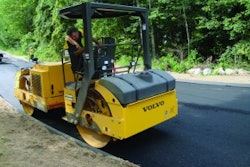
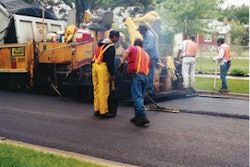
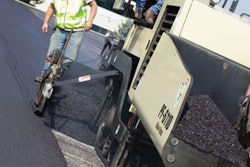
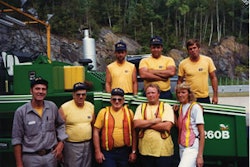



![Lee Boy Facility 2025 17 Use[16]](https://img.forconstructionpros.com/mindful/acbm/workspaces/default/uploads/2025/09/leeboy-facility-2025-17-use16.AbONDzEzbV.jpg?ar=16%3A9&auto=format%2Ccompress&fit=crop&h=135&q=70&w=240)








